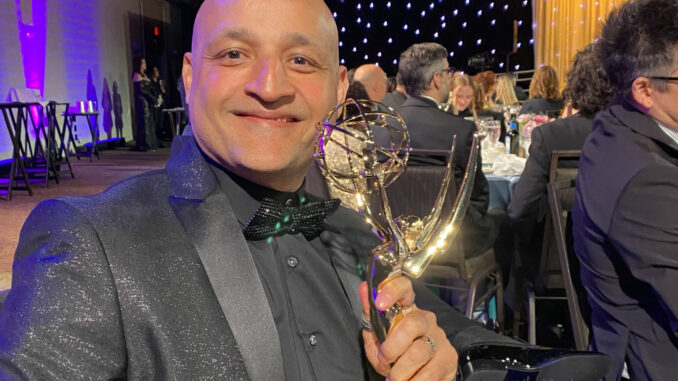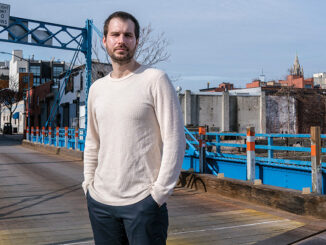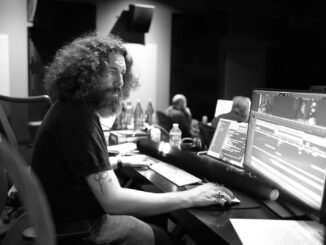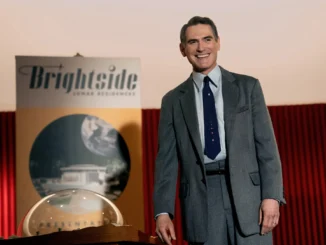
Where are you currently employed?
I’m a freelance creative currently juggling a few different projects. It’s a dynamic situation that allows me to collaborate with a variety of storytellers, which I really enjoy. It’s also been incredibly rewarding to have the freedom to choose projects that align with my creative goals and values.
Current projects:
Last year, I took on key roles in three independent feature films; genres included romantic comedy, drama, and thriller. There was also a Netflix special in the entertainment documentary space. For each project, I oversaw the editorial process from rough cut to final delivery. Some of these projects were in different languages, and I never shied away from the challenge. I embraced it as an opportunity to broaden my creative and cultural perspective.
Describe your job:
An editor’s job is to shape the raw footage into a cohesive, compelling story that resonates with the audience. It’s not just about cutting and trimming; it’s about selecting the right moments, lines, and scenes that best tell the story and evoke the desired emotions. Editors work closely with directors to understand their vision, and it’s their job to bring that vision to life through careful editing.
An editor is responsible for pacing, timing, and rhythm, deciding how scenes flow into one another, where to build tension, and where to release it. They ensure the narrative is clear, engaging, and impactful, often suggesting changes or adjustments to enhance the storytelling.
The role of an editor is crucial to any project, whether it’s a film, TV show, commercial, or music video. Without an editor, a project would remain a series of disconnected moments that would fall far short of being, ideally, a seamless, emotional journey. A film can truly be made or broken in the editing room; it’s often in post-production where the story takes its final, and usually most powerful, form.
Editors are storytellers. In addition to employing their creativity and technical knowledge when cutting picture, they oversee the work of key craftspeople who use their respective technologies to create soundscapes, visual effects, and more. Their contributions help turn hours of footage into a polished finished product. By aligning with the director’s vision and tuning in to the emotional undercurrents of each scene, editors ensure that the final piece isn’t just technically sound as a film and a narrative, but emotionally resonant. After all, if the audience doesn’t connect with the final product, the story hasn’t fully done its job.
How did you first become interested in this line of work?
Honestly, I never imagined I’d become an editor or that I would be where I am today. It all started when I began learning computer programming in school. I was a naturally curious kid and always wondered what was inside a computer. By the time I was 14 years old, I had assembled my first Windows computer and started teaching myself various software for graphic design. After a few months, I got into learning 2D and 3D animation.
Back in the mid-1990s in India, animation jobs were limited. Fortuitously, that led me in a different direction. My cousin helped connect me with a film company whose post-production department had one animation suite and three editing rooms that handled film and television work. I didn’t get a call back immediately but I stayed persistent and checked in often. Eventually, the studio manager offered me a position as an assistant editor, and that’s where my journey began.
Who gave you your first break?
The studio manager and my mentor believed in my potential and allowed me to prove myself. Their trust and support made all the difference early in my career. Just as importantly, I wouldn’t be here without the unwavering support of my family. They played a crucial role in encouraging me to follow my dreams, always standing by me and believing in my path, even when it wasn’t the easiest or most conventional.
What was your first union job?
The AMC docudrama “The Making of the Mob: New York.” This eight-part miniseries, produced by Stephen David Entertainment, premiered in June 2015, and delved into the rise of the five organized-crime families that shaped the modern American Mafia. The series featured dramatic reenactments, archival footage, and interviews with notable figures such as Ray Liotta (who narrated the series), Joe Mantegna, Drea de Matteo, and former NYC Mayor Rudy Giuliani. The show garnered significant viewership, with the premiere episode attracting 1.7 million total viewers.
What credits or projects are you proudest of, and why?
Honestly, I love what I do and can’t imagine doing anything else. I’m proud of every project I’ve been a part of, whether it was a commercial, a music video, or a feature film. I’ve had the opportunity to work across all genres, which has helped shape my versatility and storytelling instincts. One of the highlights of my career was winning a Daytime Emmy last year, which was a humbling reminder of the impact that hard work, dedication, and passion can have. Each experience has helped me grow, and I take pride in the dedication and heart I bring to the work every time.
What was your biggest challenge in your job (or on a particular project) and how did you overcome/solve it?
I think every job comes with unique challenges, but one of the biggest is trying to create something that doesn’t exist yet. You’re often starting from scratch with just an idea or a concept, and it’s up to you to bring it to life in a compelling way. That’s true when creating a story, and it’s just as true when editing a project.
One of the best pieces of advice I received early in my career was: Don’t go with the first idea that comes to mind. That stuck with me. Since then, I’ve learned to take a step back, sleep on it, and let the ideas evolve. Giving myself that space has helped me come up with more thoughtful, creative solutions.
What was the most fun you’ve had at work?
For me, the most fun always comes from working with like-minded, creative people. When I was in India, I worked for a Hong Kong-based music network called Channel [V], and it was one of the most exciting experiences of my career. We had complete creative freedom to bring ideas to life in our own way.
It was a wild and inspiring environment. We’d party at night and come back to finish our assignments, fueled by that same energy and passion. It never felt like “work,” and that kind of creative vibe made it truly unforgettable.
Jobwise, what do you hope to be doing five years from now?
I see myself editing high-profile feature films full time and collaborating with top-tier directors and storytellers. I want to be involved in projects that push creative boundaries and connect with audiences around the world. My goal isn’t just to work in film but to make a real impact through the stories I help shape while bringing a director’s vision to life.
What are your outside activities, hobbies, passions?
Spending time with my daughter is everything to me. One of our favorite things is to watch movies together. It’s not just about the film; it’s about sharing that moment, laughing, reacting, and seeing the world through her eyes. She loves to watch the projects I’ve worked on and gets so excited spotting my name in the credits. It’s one of the most inspiring feelings and reminds me why I do what I do.
I also love hiking. Being out in nature helps me recharge, reflect, and often sparks new ideas creatively.
And I genuinely enjoy hosting parties. There’s something special about bringing people together, creating memories, and filling a space with good energy, food, and laughter.
Favorite movie(s)? Why?
One of my all-time favorite films is “Schindler’s List.” It’s not just a film; it’s an exceptional emotional journey that leaves a lasting impact. The way it portrays humanity, loss, and redemption is incredibly powerful. Steven Spielberg’s direction, paired with Michael Kahn’s masterful editing, creates a narrative that is both haunting and deeply human. The decision to shoot in black and white, the use of silence in key moments, and the restrained yet impactful pacing all contribute to the film’s emotional weight.
As someone who works in post-production, I’m constantly inspired by how the film balances such heavy subject matter with grace and cinematic beauty. It reminds me of the responsibility we carry as storytellers, not just to entertain but to preserve truth, provoke thought, and stir emotion. “Schindler’s List” is a film that stays with you forever, and to me, that’s the highest mark of great cinema.
Favorite TV program(s)? Why?
Of the more recent ones, “The White Lotus,” “The Last of Us,” and “Adolescence” stand out. These aren’t just entertaining shows; they stay with you long after the credits roll. They provoke emotion, spark meaningful conversations, and showcase what’s possible when direction, editing, performance, and writing come together seamlessly. Whether it’s the biting social commentary of “The White Lotus,” the raw humanity of “The Last of Us,” or the vulnerable truth captured in “Adolescence,” each offers something emotionally rich and narratively powerful.
Do you have an industry mentor?
I don’t have a single mentor in the traditional sense, but I consider all of my peers to be mentors in their own way. I believe everyone has something valuable to teach, and I try to learn from every person I work with, whether it’s a creative approach, a technical skill, or just the way they handle challenges. That mindset has helped me grow both professionally and personally.
What advice would you offer to someone interested in pursuing your line of work?
It’s imperative to set a clear goal for what you want to achieve and to stay committed to it. In the early 1990s, when I was working in Bollywood, I had always imagined moving to Los Angeles and working in Hollywood. It felt like a distant dream at the time, but I set that goal, and through persistence, passion, and hard work, I eventually made it happen.
One of the most important pieces of advice I can offer is always to be willing to learn and remain humble. Show your creative side and explain the reasoning behind your decisions, but also understand that not every idea will make the cut, and that’s okay. This is a collaborative industry, and we work together to create something remarkable. It’s all about teamwork, flexibility, and being open to new ideas.
Was there ever a circumstance when you had to rely on the Guild for help or assistance?
I rely on the Guild for support with every union job. As creatives, we’re often focused on the work itself, so it’s important to have the Guild to ensure we’re protected, especially with the constantly changing terms of contracts. Whenever I have doubts or need clarification, I don’t hesitate to reach out to our field rep for guidance. Knowing the Guild has our backs allows me to focus more on the creative process, with peace of mind that I’m not alone in the business side of things.
Is there anything you’d like to say to your fellow Guild members, some words of encouragement?
I know the past couple of years have been incredibly challenging for all of us, but I truly believe that brighter days are ahead. Stay strong, stay positive, and remember that every challenge is an opportunity to grow. In tough times, creativity doesn’t stop — it evolves. We’ve seen firsthand how resilient and adaptable our community can be, and that gives me hope. Now more than ever, it’s important to lean on one another. Together, we are capable of achieving incredible things. Our unity is our strength, and with it, there’s nothing we can’t overcome.
Compiled by David Bruskin.





